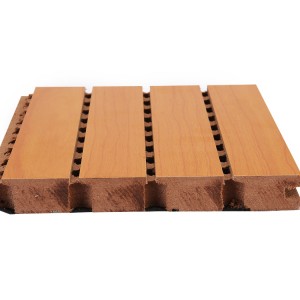With the subdivision of the industry, sound-absorbing materials are also clearly subdivided, including indoor and outdoor classifications, and also classified by place categories. Next, I will analyze the characteristics of indoor sound-absorbing board materials for everyone.
Indoor sound-absorbing panel materials are mostly loose and porous materials, such as slag wool, blankets, etc. The sound-absorbing mechanism is that sound waves penetrate into the pores of the material, and the pores are mostly open pores through each other, subject to air molecular friction and viscous resistance, and Make small fibers mechanically vibrate, so that sound energy is converted into heat energy. The sound absorption coefficient of this type of porous sound-absorbing material generally gradually increases from low frequency to high frequency, so it has a better sound absorption effect on high and intermediate frequencies.
In fact, there are many sound-absorbing materials that can be used indoors. Nowadays, the more common wall sound-absorbing materials for decoration include: wooden sound-absorbing panels, wood wool sound-absorbing panels, fabric sound-absorbing panels, polyester fiber sound-absorbing panels, etc., which are widely used in concert halls. The walls of public places such as cinemas, theaters, recording studios, studios, monitoring rooms, conference rooms, gymnasiums, exhibition halls, dance halls, KTV rooms, etc., can well absorb noise and prevent strong reflections of indoor sounds from affecting the indoor environment. Generally speaking, materials with wrinkles on the surface have better sound-absorbing effects. The wallpaper is more suitable to use matte or crepe paper, and the sound-absorbing effect of plaster for the ceiling is good.
In addition, a good sound-absorbing board material will not fall off dust during the installation process, and there is no unpleasant smell, which means that it is a non-toxic material. The material you choose should be light and easy to install. It should also be waterproof, mildew and moisture proof, and indoor Sound-absorbing materials generally have a flame-retardant effect.
Post time: Oct-29-2021





